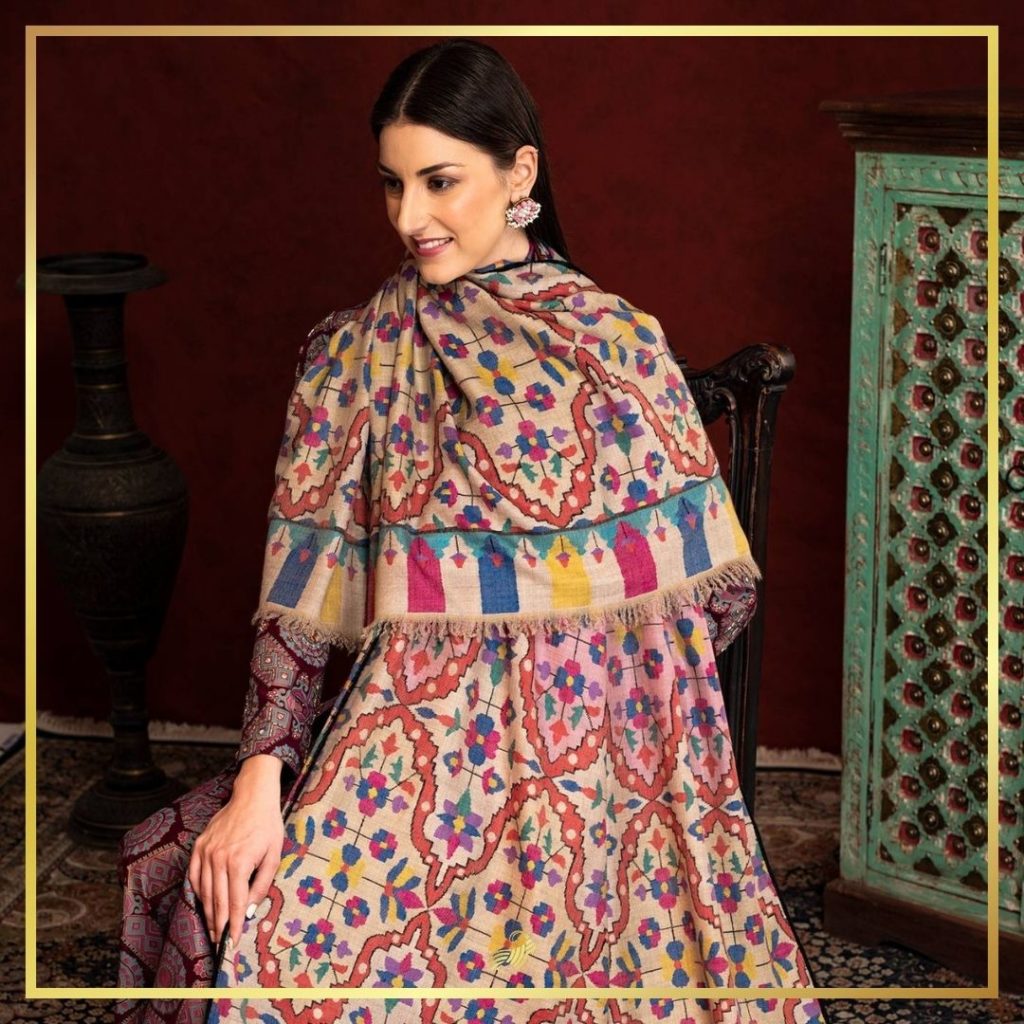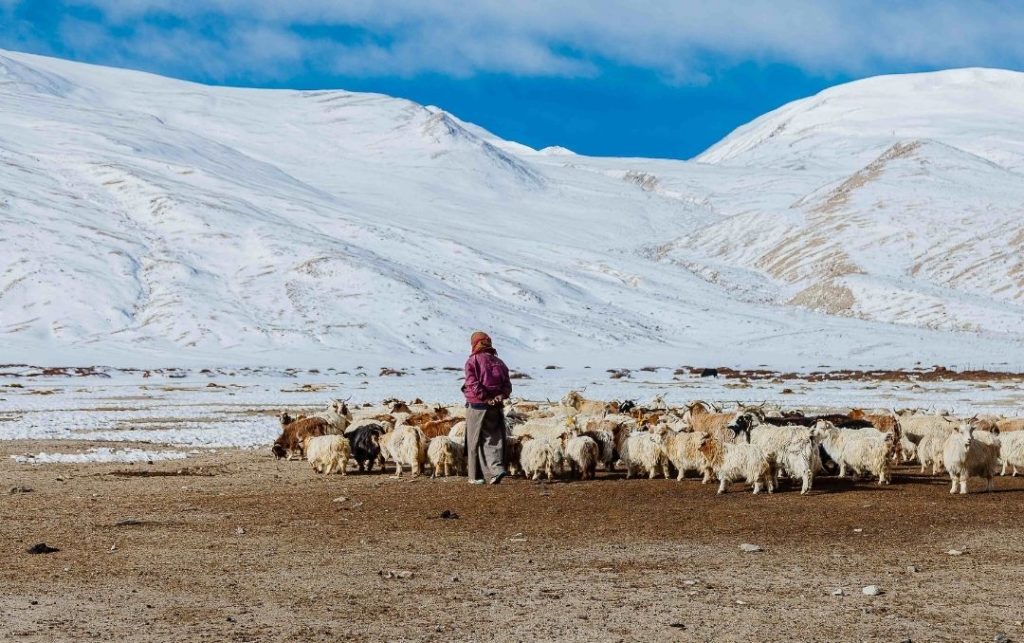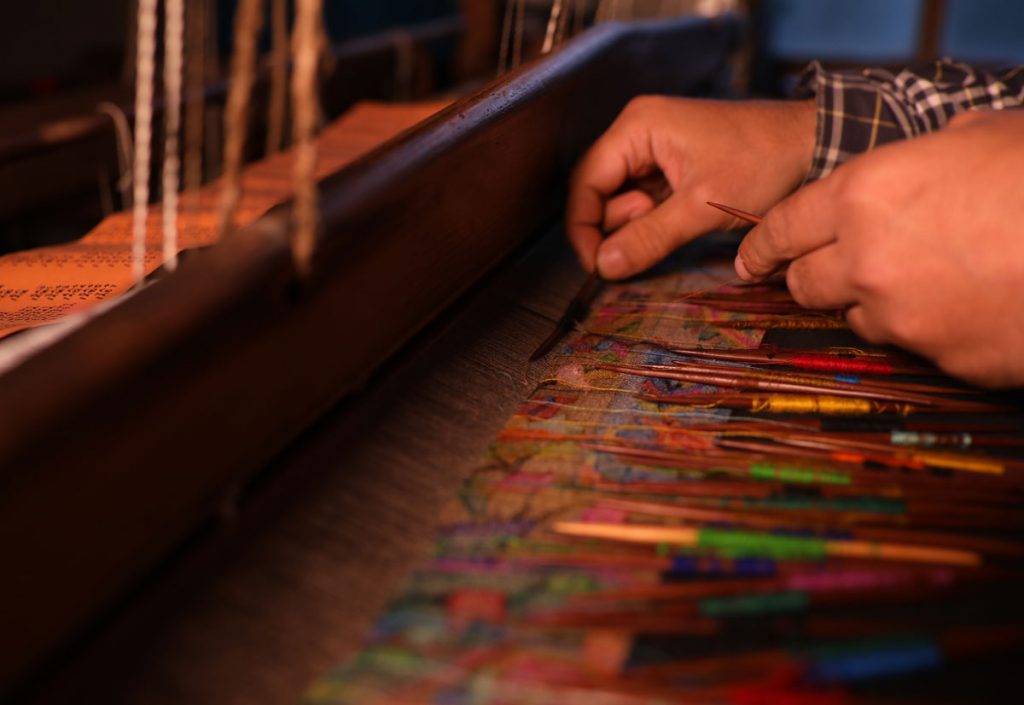Kashmir is a place in the Asian subcontinent with the beauty of nature filled with mountains, lakes, and gardens. The essence of Kashmir is intricately correlated to its heritage, culture, and picturesque aura. The divinity of Kashmir is linked to Pashmina from the 13th century. The origin of Pashmina subsided in the same century. The era was filled with revolutions in Kashmir. All the main handicrafts of Kashmir came to Kashmir through sages. Kashmir was blessed with the greatness of handicrafts like Pashmina. Pashmina is the crafting of the finest Cashmere from Ladakh to several luxurious accessories. Also, there are various styles as well as designs in Pashmina Craft. The designs are the witness of the luxury of Pashmina Craft defined meticulously with utmost precision and authenticity.
How did the craft come to Kashmir?
The 13th century was a phenomenal era for Kashmir. A Persian saint was traveling across the globe. Mir Syed Ali Hamdani was a sage from the Middle East. The footprints of a saint Mir Syed Ali Hamdani from the Middle East came to Kashmir with 700 craftsmen to adorn the beauty of the valley and to spread the holy message. He rested his feet in the region of Changhthanghi Ladakh. Thus, the saint landed its appearance in the Changhthangi Mountain in Ladakh. While perceiving nature, he locked his eyes on the Goat of marvelous wool. Awestruck with the softness and fineness of the wool, he made socks out of it and gifted them to the Sultan Zain-ul-Abideen of Kashmir Valley.
Perceiving the beauty of Cashmere wool, suggested making an industry that cultivates the Pashmina in desirable styles. Even the name Pashmina, derived from the Persian word, pashm, meaning "the soft gold" is exquisite in being.
Era of Pashmina
The heritage of Kashmir has handicrafts that are highly luxurious. Pashmina Craft is a handicraft among the other premium handicrafts. Cashmere is the finest wool procured from a rare species of Goats called Changra Goats. To craft the luxury of Cashmere, Pashmina Art of Kashmir reflects the grace of hand skill of artisans on it. Therefore, it is the crafting of the finest Cashmere procured from Changra Goats who dwell at the feet of Changhthanghi, Ladakh. Thus, the craft of Pashmina is an indigenous craft belonging to the luxury of fashion.

The craft of Pashmina reigns in the beauty of Kashmir since the 13th century. It is a gift from the saint of Persia who discovered the rare species of Goats in Chanthanghi. He entailed the luxury of Pashmina Craft in Kashmir. Afterwards, the royals adorned the Craft of Pashmina. It is an art that prevailed through centuries proving its legacy all over the world including European aristocrats and Armenian merchants. For centuries, Europeans were the largest owners of Pashmina accessories. French empress Josephine owned more than 400 Kani Pashmina Shawls from Kashmir to supplicate her beauty with luxury. In India, the Mughals had a great affinity with Pashmina Craft. Emperor Akbar had such a fondness for the Pashmina shawl that he gave it an admirable nickname, "parm-narm" meaning “supremely soft”.
Moreover, Pashmina Craft is a versatile craft that belongs to opulence. In the Craft of Pashmina, there are three main styles of accessories viz; Cashmere Wraps, Cashmere Scarves, and Pashmina Shawls. In addition, all the styles are crafted in the basic steps of Pashmina Craft including Spinning, Weaving, and Designing.
How is fine Cashmere procured?

It all starts in the realms of the Changhthanghi mountain of Ladakh. The temperature goes to a minimum in winter. A rare breed of Goats lives in the minus 40 degrees temperature. They are called Changra Goats. These goats develop thick wool on their bodies to combat the harsh winter. Eventually, seasons change. In summer, the Changra Goats shed off the thick wool against rocks and trees due to the heat in the air. Also, the wool is also manually combed out by the herders. The herders of the Changpa tribe manually combed the wool. The wool is called Cashmere wool. It is the softest and finest wool. The wool is further crafted in the horizons of Kashmir Valley in the name of Pashmina Art.
Also read: KASHMIRI SHAWLS IN MID-VICTORIAN NOVELS
The Beauty of Pashmina Craft

In the realms of Kashmir Valley, the finest Ladakhi Cashmere is crafted for many fine accessories of Cashmere through the Art of Pashmina. The artisans work meticulously on each and every piece of fine Cashmere. When the tufts of Cashmere wool reach Kashmir from Ladakh, the wool is cleaned, soaked, and dried to free from any impurity. Thus, the Cashmere wool undergoes the first process of Art. Afterward, the fine and cleaned Cashmere is transferred to the local houses for the process of Spinning.
The process of Spinning is transforming fine Cashmere wool into Cashmere yarn. The women in the households perform the precise process of Spinning. The Spinning process needs patience and precision. While humming the traditional Kashmir songs, the women meticulously spin the Cashmere wool on a wooden wheel called yinder. Therefore, the Cashmere yarn was formed to make it go forward to the next intricate process of Weaving.
Weaving is the process of creating warps and wefts by using yarn to create a surface of the fabric. Thus, the Cashmere yarn is transformed to make the fine Cashmere fabric on the handloom. The handloom is made up of forest wood. It is worked upon by highly skilled artisans of the Valley. Therefore, the Cashmere yarn is transformed into fine Cashmere fabric through the process of Weaving. The artisans work meticulously over the handlooms set up at local workshops/karkhanas. Thus, artisans work days and nights to procure high-quality Cashmere fabric by means of their hands and feet working on a handloom.
Also read: PASHMINA - IS IT A CRAFT OR FABRIC?